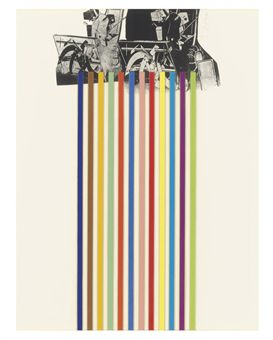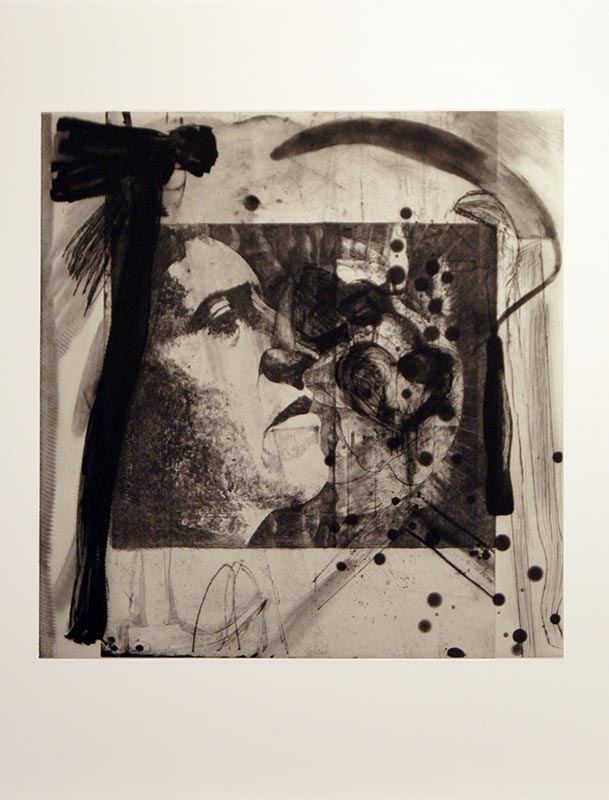Some blog posts are a chore, most a pleasure and then
there are some which feel so significant, so important and so personal that
writing them becomes a different experience entirely. This post fits into the
latter and in its expectation and poignancy in influencing my own art practice
has meant that collating my thoughts into writing this has been a slightly
daunting process to begin!
I was the first to arrive. (Of course!) I’d booked my
ticket in advance and arrived early as I’d never actually previously ever set
foot in the Chelsea school of Arts, London. Luckily though through still
looking like a student (I’m told) and some misguided snooping-around I had
somehow found my way to the Banqueting Suite; a fairly grand wooden panelled
room with large windows and ornately carved fireplaces that was originally part
of the Royal Army Medical Corps officers’ mess. Now to wait...
I was there to listen to one man, possibly the most
influential artist on my practice (and who should need no introduction to those familiar
with my work). The date was Wednesday November the 25th 2015. The event, ‘A
Conversation with Jim Dine’.
 |
| The Banqueting Suite, Chelsea School of Arts London |
In addition, Dine has always made numerous self-portraits
and for those not familiar with these and his appearance, visualise, a more
intense-looking version of Terry Pratchett minus the hat! I say this in
reverence, for I was sitting as close to the front as I could get, minus the
VIP rows (reserved largely, it would seem for the unfashionably late). The
anticipation, for me at least, was immense!
 |
| Walking Dream with Four Foot Clamp (1965) Oil paint, charcoal & steel on canvas. 1524 x 2743 x 29mm |
The evening began with a question from Coldwell asking Dine to give a flavour of what life was like during the 60s in New York; the beginnings of Pop Art and ‘Happenings’ performances. Dine replied that New York was without art collectors, dealers and gallerists, it "was a world we made ourselves" and quite literally in some ways with many of the performances including self-made sets and props from cardboard and found objects. He spoke of the ‘need’ to make work with Claes Oldenburg in what was a collegial atmosphere between the artists. It set the tone really for what became and still is the working ethos of Dine’s mentality to making art; prolific, bold and drawing upon the technical knowledge of others. The performance made-way for frenetic, gestural mark-making and has been the visual handwriting of the artist throughout his career. His work is charged with a psychological need, what could be described as a cathartic outpouring in the desire to make work and express oneself. Later in the conversation he stated, “I need to work with my hands...its physical for me”.
Dine’s answers at
this point were relatively short and matter-of-fact as I got the sense that
they were questions he’d been asked many times before, but were in-part
necessary for setting the scene. Although Dine didn’t continue with performance
as an art form after the 60s, the qualities that came from the early happenings
never really left Dine’s work, with some of the ideas about using
everyday/found objects staying within the work and more significantly the way
in which Dine continued to depict tools/inanimate objects as though they were
‘alive’ often positioning them erect as though standing or at other times
framing the image as though they were substitutes for actors on the stage. Some of the aspects of 'performance' remained.
 |
| Elyria (2000) Charcoal on etching felt. 104 x 129.5cm. |
 |
| Tool Box 10 (1966) Screenprint on paper 603 x 478mm. |
Dine spent many years growing up and eventually working
in his Grandparent’s hardware store, which inspired Dine to use tools
in his art. In what John Russell describes of Dine’s work: ‘Daydreaming amongst objects of affection’. Prolific in his depiction of many of the tools found there, the
tools became a familiar iconography/trademark of Dine’s work. The tools
reoccurring so frequently and with such intensity that Dine himself has stated
they became self-portraits. The conversation moved to focusing on Dine’s
‘Winter Tools’ series of hand coloured etchings. Coldwell stating that these
works have been said to compare to ‘Degas’ Ballerinas’ in their delicate line work
and intent of placement within the ‘frame’ of the page. Described by Coldwell
as, “Objects of desire/more alive than
human”. They very much have a feeling of movement and life to them despite
obviously being inanimate objects. The former statement met by much amusement
to Dine, who tended throughout the eve to be very sceptical and apprehensive of
interpretations of his work generally. I like his response better, “These tools are dignified...developed by
guys who worked with their hands.” In many ways that’s what I’ve always
been interested in too; there is a reverence and life of potentiality in tools
as objects, their past histories and future possibilities charging these
objects with a sense of purpose and in doing so shouldn’t be taken for granted.
Previous to this talk I hadn’t been that aware of some of
the techniques and methods Dine uses to create his prints. He treats his plates
like drawings, like paper. Speaking of the malleability of print and erasing as
a way of drawing with power tools to sand/scrape back through layers in what
was explained by Coldwell as, “...tension
between classical print making and more urban approach.” Which slightly
conflicts with the ‘hand drawn’ nature of some of Dine’s previous comments to
which I suppose he still sees using the power tools as a way of making marks on
a surface just not with a pencil or charcoal.
| Braid (1973) Etching. 85.9 x 40.8cm. |
 |
| A History of Communism (2012) Lithograph. |
The evening ended with a discussion on Dine’s on-going
series of prints titled, ‘A History of Communism’ made from reworking
lithograph stones found in a former Socialist art academy in Berlin. Previous
made work by print makers is added, edited and worked over by Dine who stated
that he saw these works as, “landscapes” and as Coldwell observed that in these
prints the tools really do become animated and like actors on a stage. Dine references Pinocchio, a character often
used in his work for its storytelling quality of what he calls, “a stick coming to life” which is in many
ways, as I learnt this evening is a reoccurring idea in all his work. Coldwell
notes that in the reworking of these stones that there is a contrast with the
new life placed into these works with, “the deadening of the original
lithograph”. Is it sacrilegious to appropriate/work into another artists work
in this way? We don’t know the reasoning why some of these stones have been
abandoned for many years by their owners particularly when it was created under conditions as repressive as those
in Berlin before the wall came down (they’re estimated well over 25 years old).
If anything the process is almost archaeological and their alteration
reinvigorates them with new life and preserves them in a way they had
previously gone unnoticed. The addition of tools and other imagery certainly
adds a sense of the historical, the political and the confined which is also interesting given
the circumstances when which these stones were originally worked into. Many
artists may be offended at the idea of reworking someone else’s work but in
this instance, I couldn’t think of anything more liberating and more
flattering.
After the talk had finished the audience were invited for
drinks in the Green Room next door with the man himself. I’m delighted to say I
got to meet him, but less so that after all my hype and anticipation, had absolutely nothing intelligent to ask
or say! The evening wasn’t necessarily anything radically new or ground-breaking
but reaffirmed many of my thoughts on the importance of drawing as a means of
expression, the significance of a sense of life in inanimate objects,
Dine’s commitment to his process/learning new techniques and above all his testament to shaping his career by following his passions/interests.
That sounds pretty good to me.


No comments:
Post a Comment